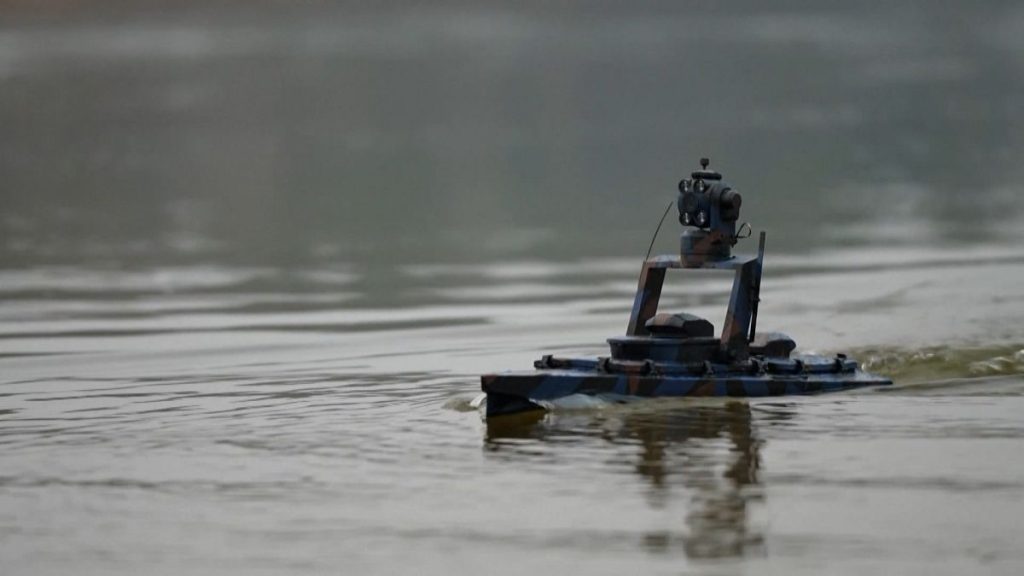The uncrewed surface vessel (USV), developed in Ukraine, represents a significant advancement in naval drone technology, packing considerable capabilities into a compact, metre-long frame. Resembling a miniature boat, this innovative maritime drone is designed for extended operational endurance, capable of functioning for many hours over long distances. Its ability to remain dormant in standby mode for several days further enhances its tactical versatility, allowing for covert deployments and surprise attacks. This combination of range, endurance, and stealth makes it a valuable asset for a variety of naval operations.
The primary function of this Ukrainian-made USV appears to be as a kamikaze vessel. Its small size belies its potential destructive power, with the capacity to carry several kilograms of explosives. This allows it to be deployed as a cost-effective and expendable weapon system, capable of targeting much larger and more expensive naval assets. The element of surprise afforded by its stealth capabilities further amplifies its effectiveness as an attack platform. The drone’s ability to approach targets undetected significantly increases the likelihood of a successful strike, potentially disrupting or even disabling enemy operations.
Beyond its offensive capabilities, the USV demonstrates remarkable versatility by also functioning as a delivery platform. Its compact size and extended range make it suitable for transporting goods across water bodies, potentially supporting logistical operations or delivering supplies to remote or inaccessible locations. This dual-purpose functionality highlights the adaptability of the platform, making it a valuable tool in both combat and non-combat scenarios. The ability to switch between offensive and support roles enhances its overall utility, offering a flexible solution for a range of maritime challenges.
The development of this advanced USV reflects the growing importance of unmanned systems in modern naval warfare. These platforms offer significant advantages in terms of cost-effectiveness, reduced risk to personnel, and increased operational flexibility. Their ability to perform tasks deemed too dangerous or difficult for manned vessels further enhances their strategic value. The Ukrainian-made USV, with its kamikaze and delivery capabilities, exemplifies the evolving role of uncrewed systems in shaping the future of maritime operations.
The emergence of compact, long-range, and stealthy USVs like this Ukrainian-developed platform has significant implications for naval strategy and tactics. The ability to deploy a swarm of these relatively inexpensive and expendable drones presents a formidable challenge to traditional naval forces. The sheer number of potential threats can overwhelm defensive systems, forcing adversaries to allocate significant resources to counter them. This can create opportunities for other offensive actions, as the enemy’s attention and resources are diverted.
Moreover, the use of unmanned systems raises complex legal and ethical questions. The potential for autonomous operation and the involvement of artificial intelligence in targeting decisions necessitates careful consideration of accountability and the potential for unintended consequences. International legal frameworks must adapt to address the unique challenges posed by these emerging technologies, ensuring responsible development and deployment of uncrewed systems in the maritime domain. Developing clear guidelines and regulations is crucial for maintaining stability and preventing escalation in an increasingly complex naval environment.














